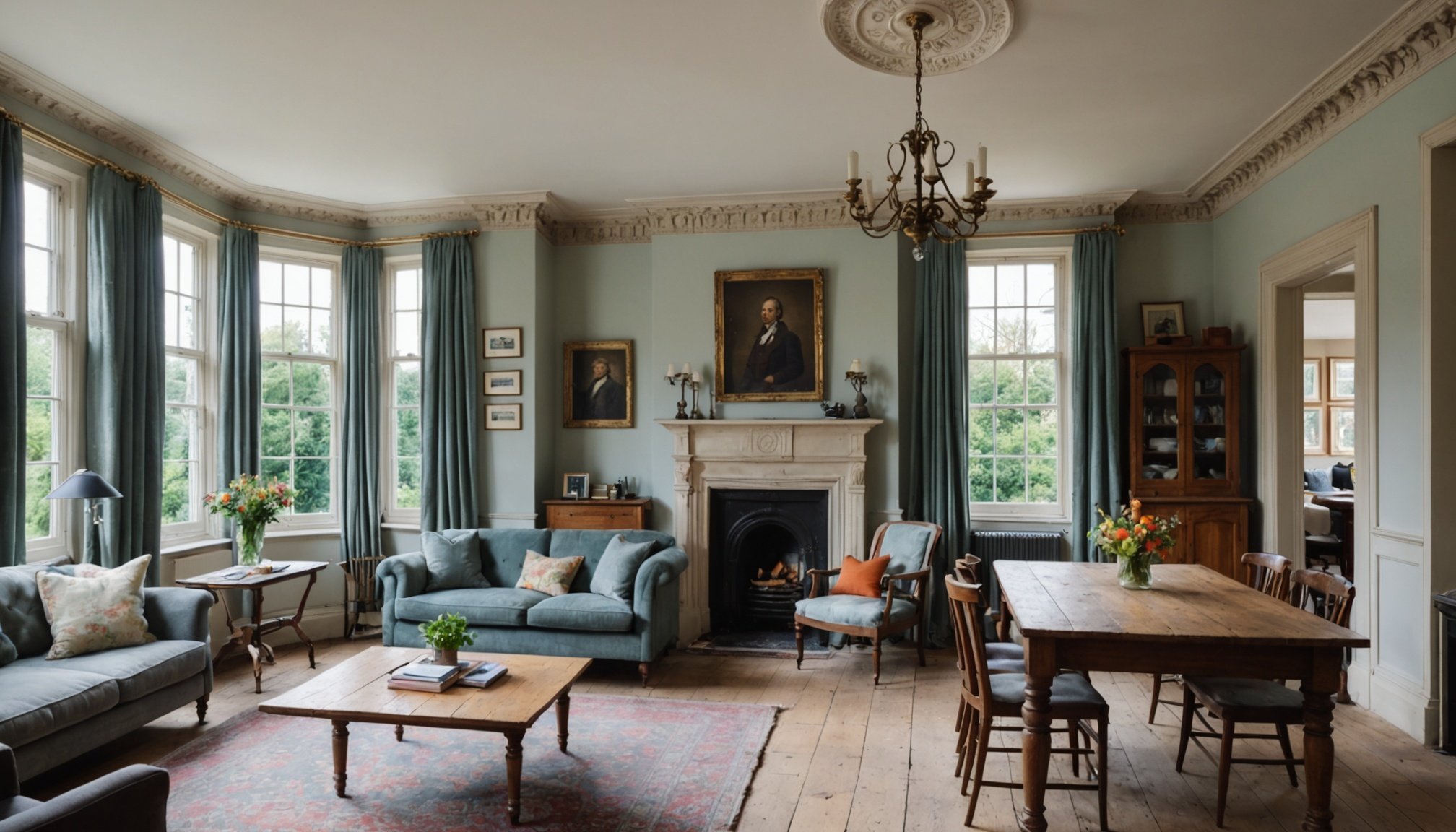Understanding Listed Buildings in Oxford
Listed buildings represent a unique blend of historical significance and architectural integrity. In Oxford, these structures not only highlight the city’s rich cultural heritage but also serve as a testament to its past. Listed Buildings are formally recognized by the government as being of special architectural or historic interest. This recognition is a crucial aspect of Heritage Preservation, ensuring that such buildings are protected for future generations.
Categories of Listing and Their Implications
Listed buildings are categorized into grades that reflect their relative importance: Grade I, II, and II. Grade I buildings are of exceptional interest, constituting a mere 2.5% of all listed buildings. Grade II buildings are particularly important structures of more than special interest, while Grade II buildings, which make up approximately 92%, are of special interest, warranting every effort to preserve them.
Also to see : How Recent Flood Plain Reclassifications Impact Property Insurance Rates in Somerset
This classification influences how owners maintain and alter these buildings. It is essential to seek approval before undertaking any work that might affect a listed structure, even internally. This ensures the building’s historical and architectural value remains intact.
Benefits of Owning a Listed Property
Owning a listed property can be highly rewarding. Beyond the prestige of owning a piece of history, listed property owners play a critical role in Heritage Preservation. They receive guidance and support from heritage organizations, enhancing the property’s upkeep and sometimes even qualifying for financial aid for restoration projects.
Also to discover : Exploring the Impact of the Electric Vehicle Surge on London Homes with Parking Amenities
Legal Considerations for Renovation
Embarking on a renovation project requires meticulous planning, especially regarding legal requirements and planning permission. Neglecting these can lead to severe setbacks or legal consequences. Before beginning any alterations, ensure you obtain the necessary permissions. This often includes submitting detailed plans to local authorities. The local council will review aspects such as structural safety and aesthetic impact on the community.
Several key legislations apply to renovation projects. For example, the Town and Country Planning Act offers a framework for obtaining planning permission in England. It’s crucial to understand how these laws affect your project plans. Failing to comply can result in hefty fines or orders to undo completed work. Consultation with local authorities can be invaluable in navigating these complex legal challenges.
Ensuring compliance with both national and local regulations not only protects you legally but also ensures that your renovations are safe and sustainable. Engaging with local authorities early can streamline the process significantly. They can provide guidance on obtaining necessary permissions and inform you of any specific compliance issues related to your project. By prioritising these considerations, you’ll lay a solid foundation for your renovation project, keeping it legally sound.
Architectural Principles in Renovation
Architectural design in renovation projects often poses the challenging task of harmonizing contemporary demands with the historical elements inherent to the structure. It is crucial to maintain a balance that respects the building’s authenticity while accommodating modern needs. When engaging in such a renovation, the fundamental principle should be to preserve the historical integrity of significant features. This includes original materials, layouts, and architectural details like mouldings, windows, and door frames.
Retaining these characteristics not only upholds the building’s unique charm but also enhances its historical value. It’s advisable to incorporate innovations subtly, ensuring they complement rather than overshadow the original architectural design. Using modern materials that mimic the appearance and texture of traditional ones can effectively blend past with present.
Additionally, when selecting styles and materials, opting for those that allow for easy identification of novel and old sections can add depth to the project. Such an approach not only preserves historical essence but also allows viewers to appreciate the architectural evolution over time. Keep in mind, adhering closely to these principles ensures that any renovation celebrates both the past’s authenticity and the present’s functionality, creating a lasting balance.
Design Inspiration for Listed Buildings
When considering interior design in listed buildings, one must tread the delicate line between preserving the past and embracing contemporary aesthetics. The architectural styles of these historic structures offer a rich source of inspiration that is essential in maintaining their characteristic charm.
Historical Design Inspirations
The key elements in period interiors often reflect the artistic movements of their time. From the opulent detailing in Victorian homes to the simplicity and function seen in Georgian architecture, these features provide an authentic backdrop for design enthusiasts to work with. Architectural styles such as ornate cornices, original fireplaces, and intricate mouldings define the era’s character and lay the foundation for lasting charm.
Modern Interpretations
Contemporary design trends acknowledge the importance of history while introducing new elements. Modern interior design strategies include minimalistic furniture and sleek finishes that can create contrast without overpowering the space. By incorporating neutral colour palettes, designers can highlight the building’s inherent architectural beauties without detracting from their vintage appeal.
Blending Old and New
Techniques for harmonizing the past with the present include using materials that echo historic aesthetics while ensuring practicality. For example, preserving original wood flooring but adding modern, understated lighting can encourage a seamless blend.
- Contrast materials like glass and steel with rustic wood
- Maintain structural elements like beams while updating fixtures
- Emphasize natural light to fuse styles gracefully
This balanced approach ultimately enhances the building’s charming aesthetics, respecting its history while embracing modern potential.
Challenges in Renovating Listed Buildings
Renovating listed buildings presents a unique set of challenges that require careful navigation. Two major hurdles in this process are preservation issues and structural impediments. Preservation guidelines often mandate maintaining the building’s historic authenticity, which can limit the extent of alterations and materials that can be used. These restrictions demand meticulous planning and compromise between modern needs and historical accuracy.
Structural Challenges
One of the most common structural challenges involves ageing materials that may not meet contemporary building standards. Issues such as unstable foundations, outdated wiring, and inadequate insulation are not uncommon. Renovators must balance reinforcing these structures without detracting from their historical character, often leading to increased timelines and costs.
Navigating Preservation Guidelines
Preservation issues revolve around adhering to strict regulations that protect the original features of the building. For instance, replacing windows or repairing roofs might require specialist materials or techniques to ensure compatibility with the building’s period style. These regulations are crucial for maintaining the building’s historic significance but can complicate and delay renovation plans.
Success Stories and Lessons Learned
Learning from successful renovations showcases that overcoming these renovation challenges is possible. In such case studies, a combination of innovative solutions and collaboration with preservation experts is often highlighted. These examples underline how understanding and adapting to preservation guidelines leads to beautifully restored buildings that honour their past while serving present needs.
Budgeting for Your Renovation
Understanding renovation costs can be daunting, especially for listed buildings. Renovations of these historic properties often come with specific challenges. When planning your budget, it’s crucial to consider a detailed cost breakdown. This includes expenses for materials, labour, and compliance with preservation standards.
However, hidden costs can quickly escalate. Unforeseen issues, like structural repairs or replacing outdated electrical systems, can add significant expense. It is prudent to allocate a contingency fund of about 10-15% to cover these unexpected costs in your budget planning.
Effective financial considerations are crucial for keeping costs in check. Start by gathering multiple quotes from contractors who specialise in listed buildings. Compare these thoroughly to avoid surprises. Additionally, regularly reviewing and adjusting your budget as the project progresses can prevent overspending.
Luckily, several resources are available to help with funding. Investigate local grants or heritage funds. These can significantly offset costs, making listed property renovations more financially feasible. Financial aid is often available for works that ensure the preservation and enhancement of these historic structures.
Mastering these financial considerations will ensure a smoother renovation experience, turning potential headaches into manageable tasks. Keep your plan flexible, stay informed about available resources, and remain vigilant about costs to keep your renovation on track.
Potential Pitfalls in Listed Building Renovation
Undertaking a renovation project on a listed building can be fraught with common pitfalls that may lead to unforeseen challenges. One prevalent mistake is failing to thoroughly understand the building’s historical constraints, which can result in costly amendments down the line. Renovation mistakes often arise from neglecting this initial research phase, so it’s essential to consult historical experts early on.
Another critical facet of avoiding pitfalls is prioritising effective project management. Maintaining open communication channels among all stakeholders, including architects, contractors, and conservation officers, is key. A robust project management plan ensures that all parties are aligned with the building’s preservation needs.
Moreover, renovating listed buildings poses unique challenges, such as sourcing authentic materials and complying with specific legal requirements. Here, experts’ tips become invaluable:
- Engage specialists: Work with contractors who have experience in listed buildings.
- Allocate extra time and budget: Expect the unexpected; allow leeway for discoveries behind old walls.
- Detailed planning: Map out the renovation timeline, accounting for potential delays.
Being aware of these potential pitfalls and how to mitigate them not only paves the way for a smoother renovation process but also helps preserve the historical beauty and architectural significance of the property.











